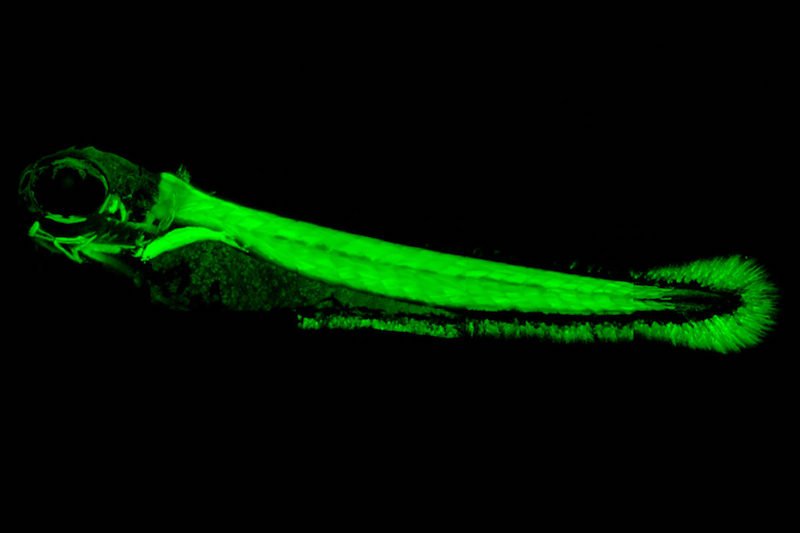A new study explains how small genetic changes enable electric fish to evolve electrical organs. This finding could also help scientists pinpoint genetic mutations behind some human diseases.

Electric organs help electric fish, such as electric eels, do all kinds of amazing things: They use electricity to send and receive signals similar to bird songs, helping them to recognize other electric fish by species, sex and even individually.
A new study in Science Advances explains how small genetic changes enable electric fish to evolve electric organs. This finding could also help scientists pinpoint the genetic mutations behind some human diseases.
Evolution took advantage of the quirkiness of fish genetics to evolve electric organs. All fish have duplicate versions of the same gene that produces small muscle motors called sodium channels. To evolve electric organs, electric fish turned off one copy of the sodium channel gene in muscles and turned it on in other cells. The tiny motors that typically make muscles contract were redesigned to generate electrical signals and voila! A new organ with amazing capabilities was born.
“This is exciting because we can see how a small change in the gene can completely change where it is expressed,” says Harold Zakon, professor of neuroscience and integrative biology at the University of Texas at Austin and corresponding author of the study.
In the new paper, the researchers describe discovering a short section of this sodium channel gene, about 20 letters long, that controls whether the gene is expressed in any given cell. The researchers confirmed that this control region is either altered or completely missing in electrified fish. And because of this, one of the two sodium channel genes is disabled in the muscles of electric fish. But the results go far beyond the evolution of electric fish.
“This control region is found in most vertebrates, including humans. “So, from a human health perspective, the next step will be to study this region in databases of human genes to see how much variation there is in normal humans and whether some deletions or mutations in this region could lead to reduced expression of sodium channels that could cause disease,” Zakon says.
The study’s first author is Sarah LaPotin, a research technician in Zakon’s lab at the time of the research and now a PhD candidate at the University of Utah. In addition to Zakon, the study’s other senior authors are Johann Eberhart, professor of molecular biology at UT Austin, and Jason Gallant, associate professor of integrative biology at Michigan State University.
Zakon says that for an electric organ to evolve, the sodium channel gene must be turned off in muscle. “If they turned on the gene in both the muscle and the electric organ, all the new things that happen in the sodium channels in the electric organ would also happen in the muscle. So it was important to isolate the expression of the gene in the electric organ, where it could evolve without harming the muscle.”
There are two groups of electric fish in the world – one in Africa and one in South America. The researchers found that the African electric fish have mutations in the control region, while the South American electric fish have lost this mutation completely. Both groups arrived at the same solution to evolve an electric organ, albeit in two different ways – they lost expression of a sodium channel gene in the muscle.
“If you rewind the tape of life and press the play button, does it play the same way or does it find new ways forward? Does evolution work the same way over and over again?”
“Let’s try to answer that question, as electric fish have evolved these incredible traits over and over again. In this paper, we tried to understand how these sodium channel genes were lost over and over again in electric fish. It was really collaborative work.”
One of the next questions the researchers hope to answer is how the control region evolved to open sodium channels in the electric organ.
University of Texas at Austin. 1 June 2022.
Article: LaPotin, S., Swartz, M. E., Luecke, D.M., Constantinou, S. J., Gallant, J. R., Eberhart, J. K., & Zakon, H. H. (2022). Divergent cis-regulatory evolution underlies the convergent loss of sodium channel expression in electric fish. Science Advances, 8(22), eabm2970.

